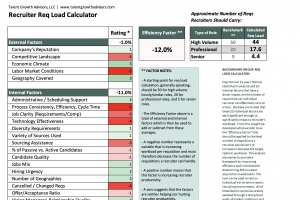Leadership and the Knowledge Worker

More than 80% of the share price (market value) of the average company today is created by its underlying intellectual capital – brands, patents, processes, strategic relationships, etc. The percentage of value created by intellectual capital (IC) in modern companies is up from next to nothing in the 1980s.
The value creation engine has shifted from “making and moving” to “thinking and creating”. Making and moving is still important but the big bucks are clearly attributed to the latter. Thinking and creating is the critical force.
Companies had many decades to hone the way managers were taught to lead “making and moving” workers – assembly lines, supply chains … pre-computerized office functions (bookkeeping, ordering, invoicing, etc.). What they learned has in many ways been spruced up and bequeathed to a new generation. But how should managers manage a team that is producing something that is intangible – like a brand or a customer relationship? What’s different about that style of leading? Do we even make the distinction in our leadership development efforts?
While there may be little clarity on this subject, clues abound. If you don’t find “giving greater autonomy” in just about any article you read on increasing engagement and performance, you better check the date it was written. “Autonomy” is the first step in the right direction. Exactly what does this mean?
In essence it means, “don’t tell me how to do my job”. At some point in the past, that would have been a mere complaint. Today it is good advice, for the right reasons. Most people aren’t shoveling sand, a task that F.W. Taylor (the father of industrial efficiency) could define quite clearly and set standards for, down to how many shovelfuls a worker should be expected to shovel per minute. Intellectual capital, however, works quite differently.
Imagine a night at the symphony. A symphony conductor, leading the orchestra, applies knowledge to knowledge. While symphony musicians are highly skilled and professional, the conductor knows the entire score and knows how to communicate and induce the aspects of a great performance -- the timing, the feeling, consonance of sound -- the musicians know how to respond with their instruments to this communication and inducement. The orchestra’s musicians respond impressively as they come together to create a unique and beautiful sound.
In business, a manager’s role was historically that of “the boss” -- the proverbial taskmaster. The skills of a taskmaster migrated over time from the factory to the office. Slower or faster is better or worse. Time is money.
But now thought is money. A taskmaster is not needed, a results master is; a manager who can apply knowledge to knowledge; communicate and orchestrate an outcome and rely on the knowledge worker to determine how to achieve the desired result. They don’t need to be told how to get there.
Do management development programs, especially for critical roles, recognize this new pattern? They better – since 80% of the typical company’s market value depends on it.
Want to learn more about how business value, intellectual capital and talent are connected? Pre-order my new book: Talent Valuation: Accelerate Market Capitalization through Your Most Important Asset.
Share this Article
Learn more about our unique approach to Talent Strategy Formulation.



